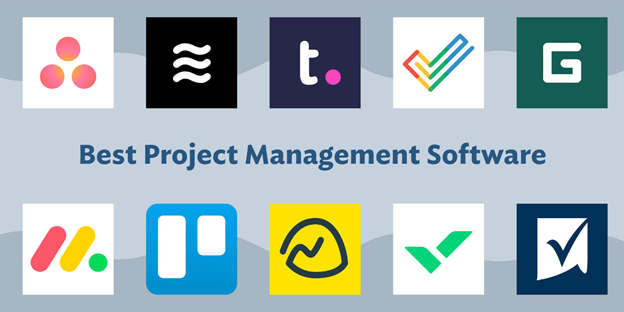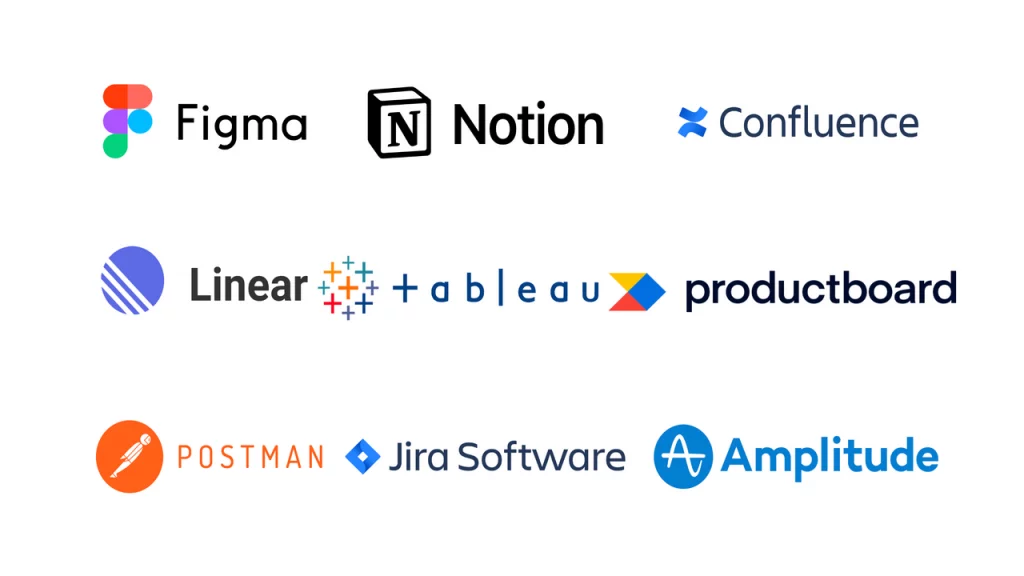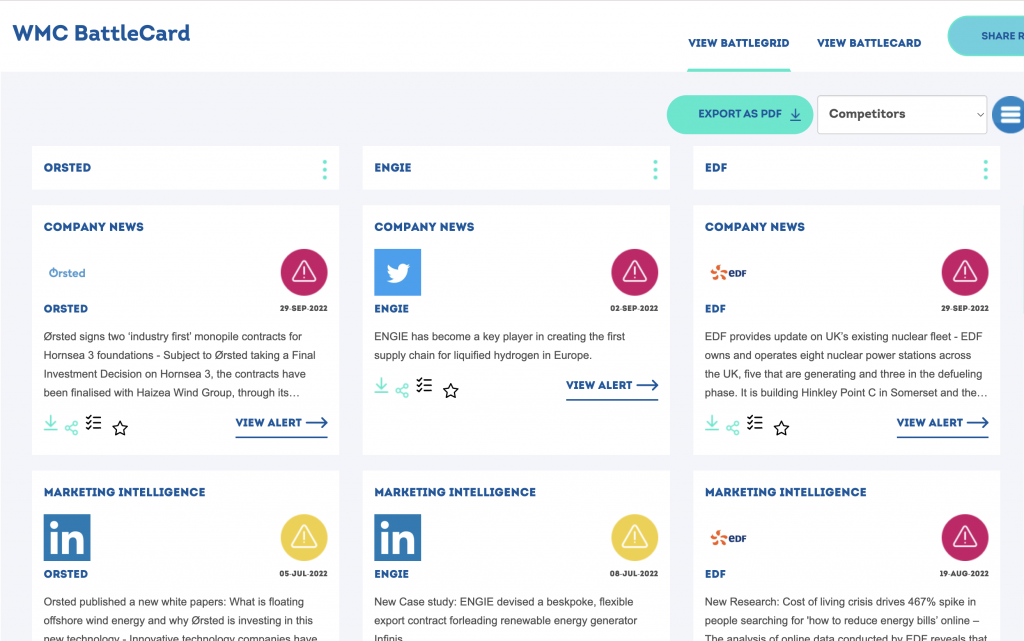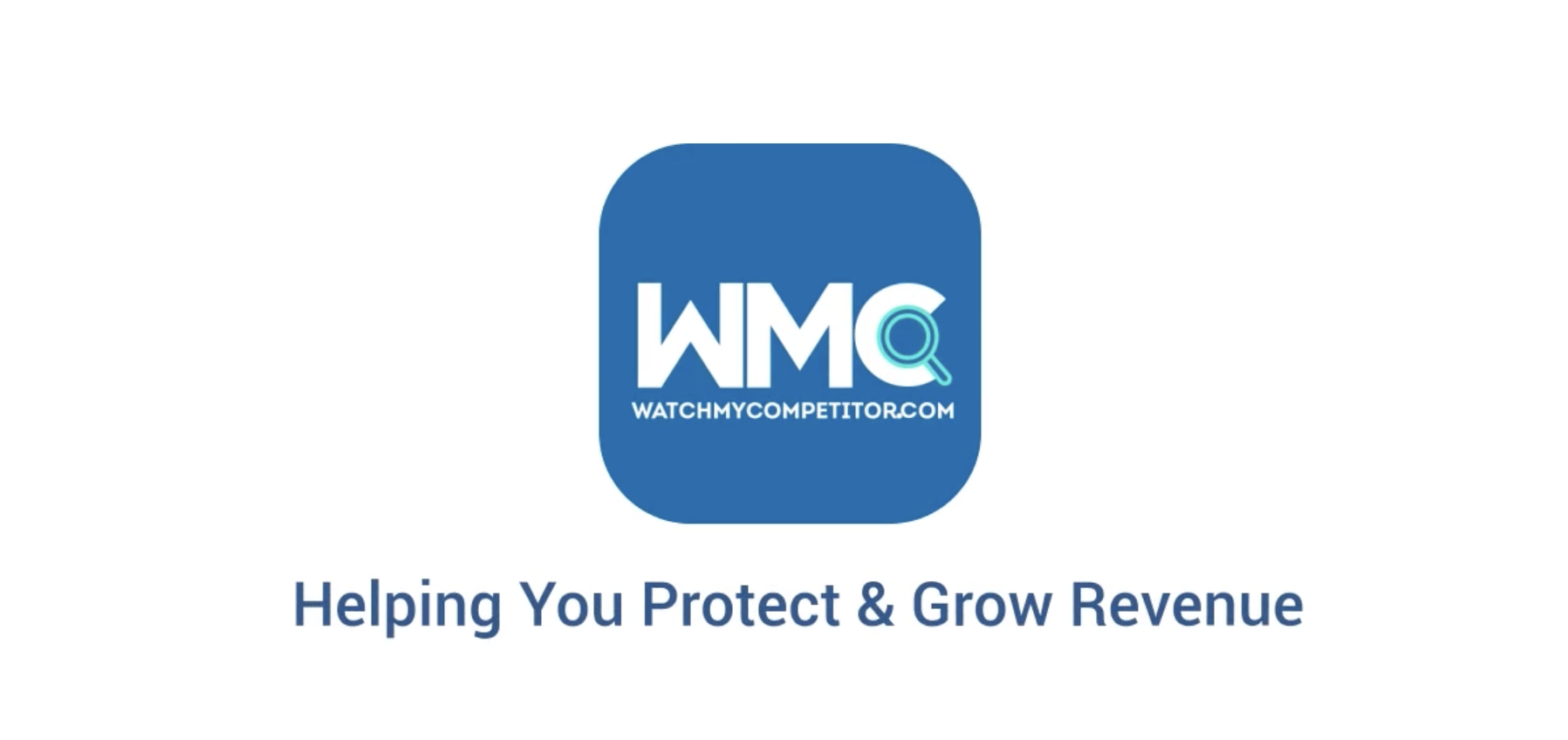Overview
- Understanding product roadmap tools
- Why it’s important to choose the right tool
- The 5 key types of product roadmap tools
- Criteria for selecting the right tools
- The significance of competitive intelligence platforms
- How to select the right product roadmap tool
- Advantages of incorporating various product roadmap tools
- Integration & implementation of product roadmap tools
Introduction
A survey of more than 1,500 product managers revealed over 50% of product teams cite “keeping roadmaps and processes consistent” as their number one growing pain in 2023.
This important insight highlights the critical need for creating and maintaining an effective product roadmap to guide your product development strategy in 2024.
Product roadmap tools offer a range of solutions and features to help you navigate the complexities of modern product development. They provide a comprehensive and structured framework for planning, prioritising, and executing your product strategies.
However, one of the biggest challenges is choosing the most appropriate product roadmap tools to employ, as not all of them will suit your specific needs and preferences.
This comprehensive guide will examine must-have product roadmap tools for 2024, with a special focus on competitive intelligence platforms for monitoring the market and analysing competitors to inform your product roadmap.
You will learn how different tools can help you gain valuable insights, collaborate effectively and allow you to adapt to changing market conditions. We’ll also discuss the key factors to consider when selecting product roadmap tools and provide you with a step-by-step guide on how to implement them into your product development strategy.

Understanding Product Roadmap Tools
Product roadmap tools are specialised software applications or platforms that help you create, visualise, manage and communicate your product roadmaps.
These tools aim to simplify the planning and execution of product development, by offering intuitive interfaces and features tailored to the needs of product managers, developers and other stakeholders involved in the product development process.
In essence, product roadmap tools serve as a comprehensive command center for product development activities, enabling you to orchestrate your entire product journey from conception to launch and beyond.
Why It’s Important To Choose The Right Tool
Before making a selection, you must carefully evaluate each product roadmap tool’s features, scalability, and integration capabilities. This ensures that the product roadmap tools you choose to use will align with your product management needs and strategic goals.
Failure to choose the most suitable product roadmap tools to utilise can lead to you implementing tools that are:
Too complex or too simple for your needs — ultimately rendering them useless and ineffective to achieve your product goals.
Not compatible with your existing tools and systems — causing integration issues and data silos.
Not user-friendly or intuitive — making them challenging to use and difficult to get your team on board.
Not secure or reliable — putting your data at risk or exposing it to unauthorised access.
Not scalable or flexible — limiting your ability to grow and adapt your product roadmap as your product evolves.
The 5 Key Types Of Product Roadmap Tools
There are several types of product roadmap tools available for creating and managing your product roadmaps.
Each type has unique features and applications that can be beneficial, depending on your specific needs and goals. Key types of product roadmap tools include:
1) Project management tools
Project management tools are multifaceted platforms that support the creation of a product roadmap and management of tasks. These tools allow you to efficiently plan, organise, and manage resources to achieve your product goals.
They function as centralised hubs where teams can work together, oversee assignments, and track the progress of projects.
Their features and functionalities include:
Task organisation & management: Project management tools help you break down projects into manageable tasks, delegate responsibilities, establish timelines, and track progress.
Resource allocation & planning: They assist in the efficient distribution of manpower, time, and budgets by enabling precise allocation of resources to different aspects of the project.
Collaboration & communication: They facilitate seamless and effective teamwork by providing document sharing, instant messaging, and commenting capabilities.
Progress tracking & reporting: They provide real-time tracking of project advancement, offering valuable insights into accomplished assignments and milestones reached.
A tool worth exploring is Wrike, a cloud-based project management tool that helps you plan, organise, and manage your product development processes.
2) Product management tools
Product management tools are specifically designed for managing the lifecycle of a product. These tools help you map out your product’s journey, determine the most crucial features, and ensure seamless integration with your existing toolkit.
They function as a strategic guide that steers your product from its inception through to development, ensuring that your product strategy stays in sync with both business goals and customer needs.
Their features and functionalities include:
Visualisation of strategic plans: Product management tools help you create clear, visually appealing roadmaps that effectively convey strategic plans and timelines for product evolution.
Feature prioritisation & management: These tools enable teams to prioritise product features based on various factors such as market demand, user feedback or business objectives.
Integration & compatibility: They ensure smooth integration with other tools and systems for efficient and comprehensive product management.
Feedback incorporation: They offer mechanisms to collect, analyse, and integrate user feedback into the product development process.
A tool worth exploring is Productboard, a product management tool that helps you map out your product’s journey, decide what features are most important, and integrates smoothly with other tools you may rely on.
3) Agile tools
Agile tools are designed to support agile methodologies which emphasise flexibility, collaboration and customer satisfaction.
These tools can help you swiftly adapt your product roadmap based on changing requirements, market dynamics, and customer feedback. They foster iterative product development, empowering you to consistently refine and enhance your product offerings.
Their features and functionalities include:
Sprint planning & execution: Agile tools assist in planning and executing iterative development cycles or sprints, allowing teams to focus on specific goals within short time frames to provide greater flexibility.
Backlog prioritisation & management: These tools help you manage a list of tasks or features to determine which items should be prioritised in the development cycle, enabling efficient sequencing of features.
Real-time collaboration & adaptability: They facilitate real-time collaboration among team members, allowing you to adapt quickly to changing project requirements.
Transparency & visibility: They provide visibility into ongoing work, progress, and obstacles through visual boards or dashboards, ensuring transparency across team activities.
Jira Software is a roadmap tool that supports agile methodologies in product development such as Scrum, Kanban, or hybrid frameworks.
4) Competitive intelligence platforms
Competitive intelligence platforms provide features that focus on tracking and analysing competitor activities in real-time to provide invaluable insights that are crucial for informed decision-making.
They help you keep a vigilant watch over competitors and allow you to assess what’s currently happening in the market. These tools enable you to identify market gaps, opportunities and emerging trends to give you a competitive edge.
Their features and functionalities include:
Competitor analysis & tracking: Competitive intelligence platforms can provide you with comprehensive analysis of competitors’ products, marketing strategies, market positioning, and changes in their offerings.
Market trends identification: They help you identify emerging trends, opportunities, and potential threats in the market by continuously monitoring market dynamics and consumer behaviour.
Benchmarking & comparative analysis: They enable you to benchmark your products or strategies against competitors, helping you identify areas for improvement or differentiation.
Real-time data & insights: They provide reliable data and valuable insights for informed decision-making, allowing you to formulate effective product development strategies to achieve your goals.
WatchMyCompetitor is the complete competitor intelligence platform that helps you automatically track your competitive landscape and provides you with relevant, actionable intelligence to outsmart the competition.
It uses both AI and experienced market analysts to provide you with real-time and actionable insights into your competitive environment.
5) Customer feedback tools
Customer feedback tools are dedicated to capturing, analysing, and managing customer feedback. These tools can be used to inform your decision making process and help you prioritise features in your roadmap based on market demand.
They allow you to tailor your product development strategy according to user preferences, customer needs, and changing expectations.
Their features and functionalities include:
Feedback collection channels: Customer feedback tools offer various ways for users to express their thoughts and opinions, facilitating the collection of valuable customer feedback.
Analysis & categorisation: They have the ability to analyse feedback to identify patterns, sentiments and key themes being discussed by users.
Actionable insights generation: They help you extract practical and usable conclusions from customer feedback to help you make informed decisions.
Reporting & prioritisation: They can summarise feedback trends and provide reports to help you prioritise product development initiatives based on the things users value the most.
UserVoice is a customer feedback tool that is highly recommended and helps you automate, capture, analyse and manage customer feedback.
The Significance of Competitive Intelligence Platforms
Product roadmap tools play a crucial role in planning product development and optimising workflows, however their effectiveness is extremely limited if you don’t incorporate relevant data and insights when using them.
Competitive intelligence platforms complement product roadmap tools by providing you with reliable information to inform your product roadmap.
They gather and analyse data from various sources to give you real-time insights into competitors’ strategies, current market trends, and customer preferences — giving you a comprehensive view of the competitive landscape so you can make informed decisions.
When used in conjunction with product roadmap tools, competitive intelligence platforms allow you to strategically plan product development, anticipate market shifts, and tailor your product offerings to meet evolving customer needs and preferences.
How To Select The Right Product Roadmap Tool
With so many product roadmap tools available, selecting the right ones to integrate into your product development strategy can seem like a daunting task.
To help you narrow down your options and select tools that will best suit your needs and preferences, here are some of the most important factors to consider:
A) Scalability
As your product and team evolve, the tool should seamlessly adapt to accommodate your growing needs. Consider the tool’s ability to handle increased data volume, support additional users, and integrate with new systems as your product portfolio expands.
B) Ease of use
A user-friendly interface is essential for efficient adoption and utilisation. The tool should be intuitive to navigate, with clear instructions and tutorials to guide users through its features and functionalities.
A drag-and-drop interface, customisable views and real-time editing capabilities can significantly enhance the user experience for your team.
C) Integration capabilities
Seamless integration with existing project management and communication tools will streamline workflows and eliminate the need for data duplication. Ensure the tool supports integrations with your existing platforms and other relevant software that you use.
D) Cost-effectiveness
Evaluate the pricing models and subscription plans offered by different tools to find one that aligns with your budget and usage patterns. Consider factors like the number of users, storage requirements, and included features when making cost comparisons.
E) Feature set
Assess the tool’s feature set against your specific requirements. Key features to consider include timeline visualisation, prioritisation frameworks, collaboration capabilities, reporting and analytics, and integration capabilities with other tools.
F) Customer support
Responsive and reliable customer support is essential for resolving any issues that may arise during implementation or usage. Evaluate the tool provider’s support channels, response times and customer satisfaction ratings.
G) Vendor reputation
Choose a tool from a reputable vendor with a proven track record of delivering reliable and innovative solutions. Research customer reviews, industry analyst reports and case studies to assess the vendor’s reputation and expertise

Advantages Of Incorporating Various Product Roadmap Tools
The use of a variety of product roadmap tools can significantly enhance the efficiency and success of your product development journey. When different tools with unique capabilities are combined, they can produce superior results.
Some of the key advantages of incorporating a suite of product roadmap tools into your product development strategy include:
1) Data-driven decisions
Product roadmap tools typically come with analytics and reporting features that can be integrated with other data platforms, such as competitive intelligence systems.
These features and integration capabilities allow you to track key metrics and analyse data from a variety of different sources, providing a data-driven foundation for strategic decision-making.
This data-driven approach results in the formation of a more robust and resilient product roadmap.
2) Market opportunity identification
Product roadmap tools often come with market research and customer feedback features that enable you to uncover untapped potential in the market.
These features can assist in pinpointing new avenues for growth by analysing emerging trends, understanding customer sentiments, and identifying unmet needs or gaps in the market.
This empowers you to create unique products that not only differentiate themselves from competitors, but also consistently meet market demands and customer expectations.
3) Maintaining a competitive edge
Product roadmap tools can assist in giving you a holistic view and comprehensive perspective of the competitive landscape.
This can provide you with valuable insights about shifting market trends, evolving customer needs and competitor activities that could affect your product’s success.
By utilising product roadmap tools to keep a close eye on competitors, you can strategically steer product development to gain a competitive edge in the market.
4) Collaboration & communication
Product roadmap tools have features that facilitate seamless collaboration and communication among cross-functional team members.
These features enhance the sharing of ideas, feedback and updates in real-time, fostering a more transparent and agile work environment. This enhances team unity around product objectives and strategies, leading to more cohesive and effective product development efforts.
5) Efficiency & productivity
Product roadmap tools come equipped with features that can automate routine tasks and serve as a unified hub for all product management activities.
This ensures that all crucial information is readily available, minimising time spent on hunting for data or toggling between various tools.
The automation and collaboration capabilities of these tools can notably enhance efficiency and productivity, paving the way for faster and more effective product development processes.

Integration & Implementation Of Product Roadmap Tools
The successful incorporation of product roadmap tools into your existing workflows is key to unlocking their full potential and ensuring a seamless transition for all involved parties.
Below is a step-by-step guide for integrating product roadmap tools into your product development strategy, and a list of best practices to enhance user adoption.
The 7-Steps To Effectively Integrate Product Roadmap Tools
Step 1: Pinpoint your requirements
Gain a clear understanding of your organisation’s specific needs and the essential features you’re seeking in a product roadmap tool.
Step 2: Select the ideal tool for your organisation
Conduct thorough research and pick a product roadmap tool that aligns best with your requirements. Take into account aspects such as ease-of-use, customisation possibilities, integration potential and pricing.
Step 3: Define the integration scope
Identify the data and systems that need to be connected with the product roadmap tool. This could encompass project management tools, customer relationship management (CRM) systems, or other software utilised in your organisation.
Step 4: Choose the right integration approach
Select the most appropriate integration method, such as direct API integration, middleware, or cloud-based solutions to ensure seamless interoperability between different systems.
Step 5: Test the integration
Prior to full-scale implementation, conduct thorough testing to identify and resolve any issues. This ensures the integration functions as anticipated and minimises the risk of operational disruptions.
Step 6: Train your team
Once the integration is complete, train your team on how to use the product roadmap tool effectively. This ensures everyone can leverage the full capabilities of the new tool and its features.
Step 7: Ongoing supervision & modification
Once the integration is finalised, it’s important to persistently oversee the system and implement necessary modifications. This ensures that the integrated tool continues to fulfill your requirements and functions with maximum efficiency.
Best Practices For User Adoption
A) Establish clear objectives & goals
Make sure to convey the objectives and goals of implementing the new tools to all stakeholders clearly. This ensures everyone is on the same page and supports the initiative.
B) Offer thorough training & support
Provide detailed training sessions and continuous support to help users get acquainted with the new tools’ features, workflows and advantages.
C) Promote a culture of ongoing learning
Encourage a culture of constant learning and exploration. This motivates users to fully utilise the tools’ capabilities.
D) Encourage feedback & refinement
Actively seek feedback from users throughout the implementation process. Use this feedback to fine-tune your integration and training strategies.
E) Evaluate & share impact
Regularly assess the effect of the integrated tools on product development processes and performance. Share these results with stakeholders to keep them informed about the benefits of using the tools.
Concluding Thoughts
The digital landscape continues to evolve at a breakneck pace, making the tasks of product development and project management increasingly more complex.
As technological changes accelerate and customer expectations continue to shift, having clarity and control in your product development operations become even more challenging.
It’s vital to equip yourself with the right tools to help you make informed decisions, streamline your processes, and stay ahead of the competition.
Among the essential resources for product development in 2024, product roadmap tools and competitive intelligence platforms stand out as being crucial assets. When combined, these two powerful elements provide an effective and cohesive approach to achieve your product goals.












